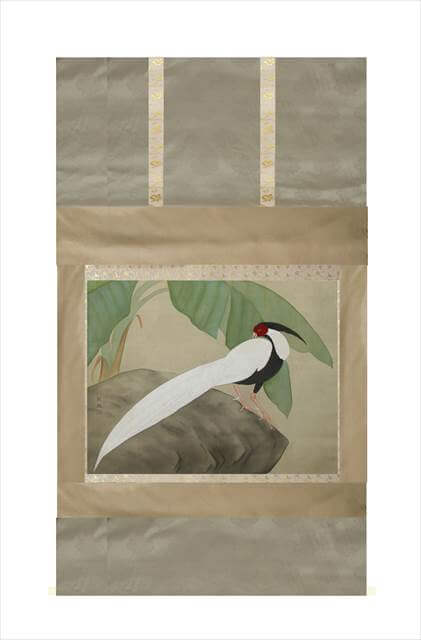Stain Removal Work on a Kakejiku Artwork on Silk Canvas Requested from Australia
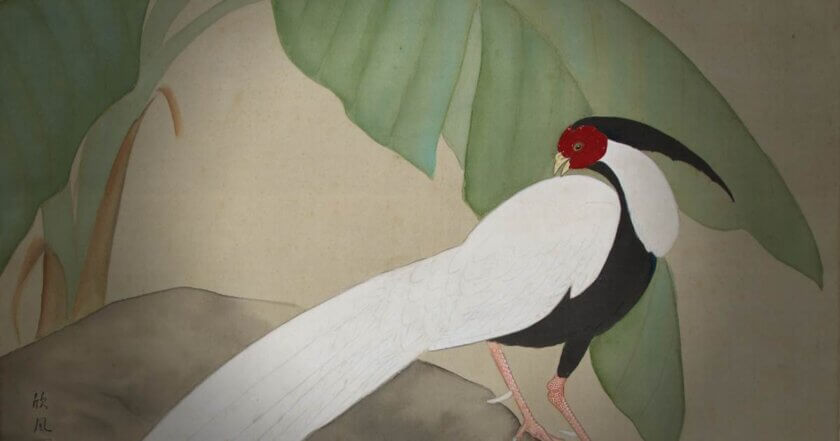
Stain Removal Work on a Kakejiku Artwork on Silk Canvas Requested from Australia
One of the most common concerns we are consulted by our customers is stains their kakejiku has developed.
Regardless of the cause, the only way out is stain removal.
The work supposes remounting since a kakejiku with a stained artwork will be dismantled completely being removed its mounting fabric and backing papers for enabling us to use cleaning solution and water to rinse.
Top-class expertise is especially required for the process even among all other complex restoration works and the task must be absolutely sensitive as it could be ended uncompleted depending on the state of the artwork and stains due to an aspect of the protection of the target piece.
The episode this time is about one of those works requested by a customer living in Australia.
He is a repeat customer who has placed an order for kakejiku restoration with us. – We are very appreciative of the recent rise in the return customers abroad.
Here is the ordered kakejiku. Its pheasant motif is the same as that of his kakejiku restored earlier and the centerpiece is rather large in size.
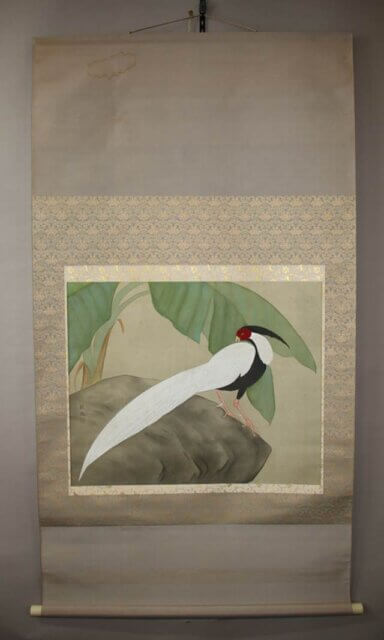
The artwork of the previous kakejiku was painted on paper but this one is on silk.
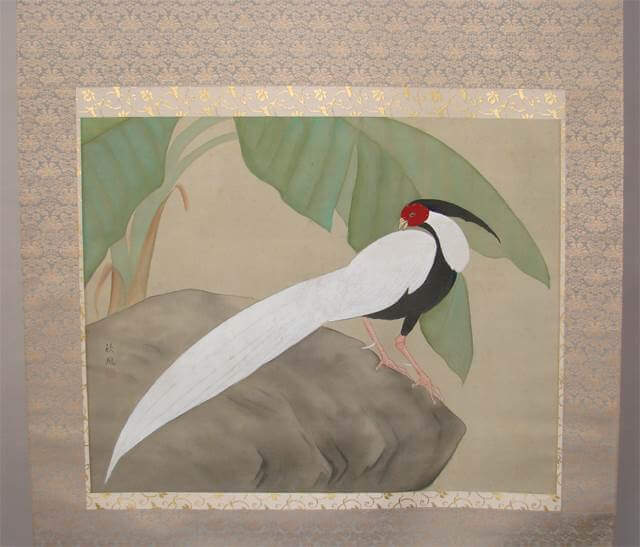
Stains have covered all over the work.
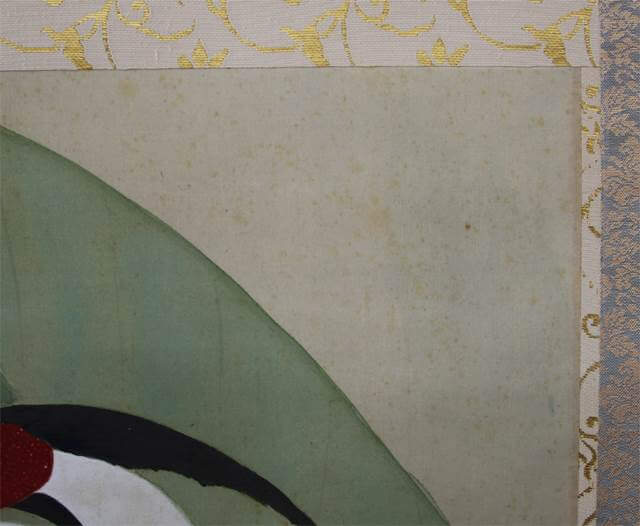
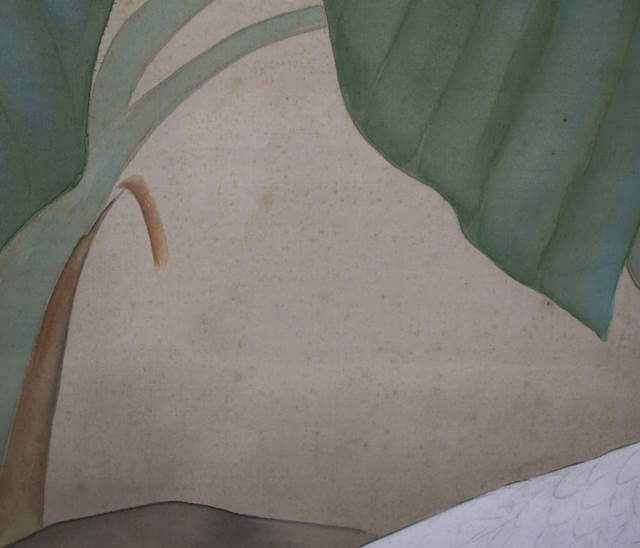
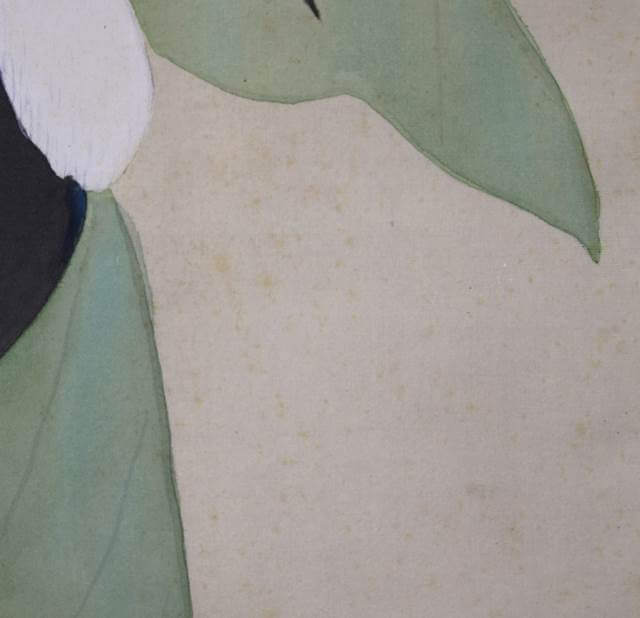
The red paint could easily run when using water and for that reason, extra care is necessary for pre-work color fixing.
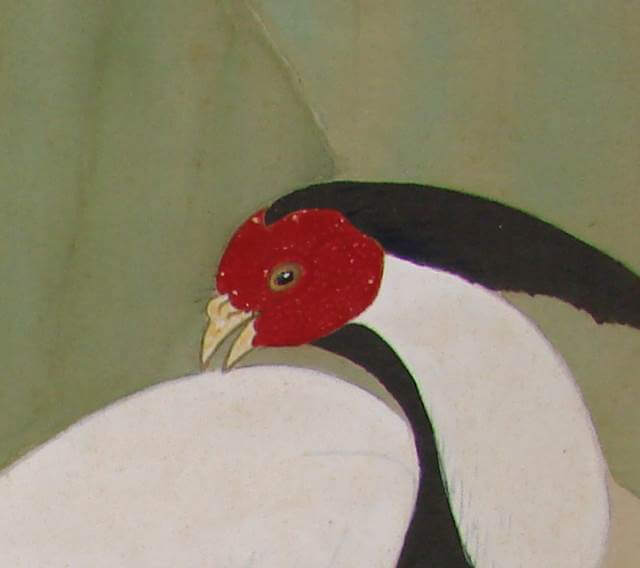
Due to the nature of whitewash which easily flakes, remounting and stain removal are carried out with the greatest care. – The work undertakes once we gain customer’s acceptance of the unavoidable risk of flaking on a worn-out main work.
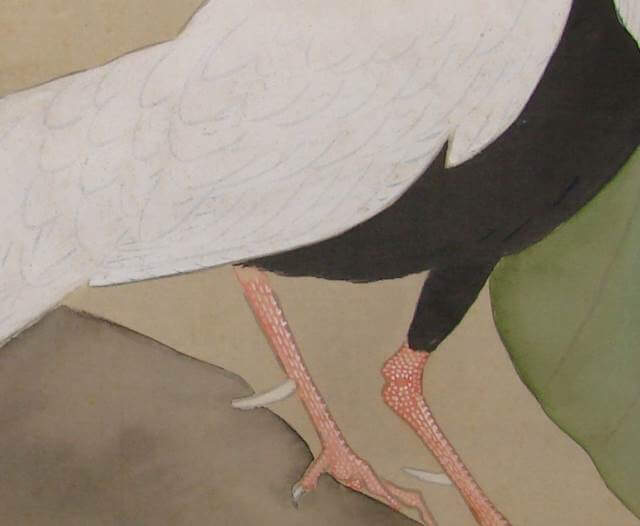
Consultation for the Details
We had a consultation for the details with the customer and we settled to execute the following procedure.
The stain removal : To be conducted up to the point where we could avoid color loss.
Mounting style : Gyō-no-gyō
Finished size : Our recommendation. Slightly smaller than the original size.
Mounting fabric : See the picture below.
Listening to his preference, this time we suggested several plain fabrics with a rustic and tranquil feeling. He selected the dark beige colored one shown in the picture below (the upper leftmost side).
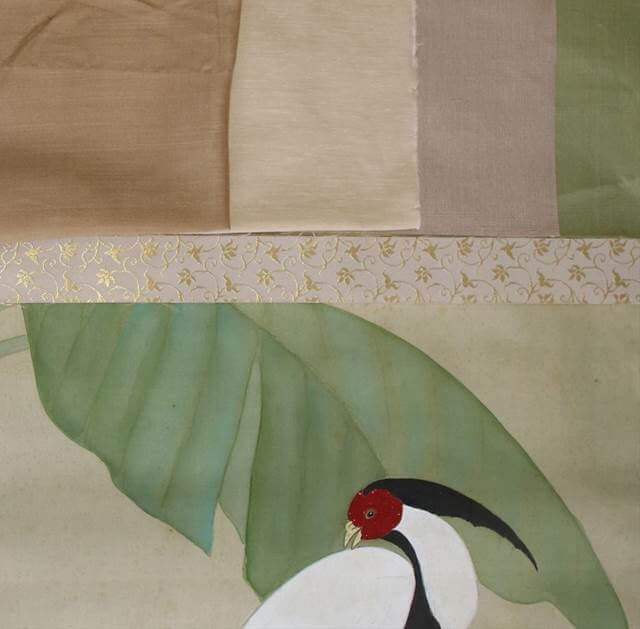
Repair Process
The rough flow of remounting operation for this time is as follows:
Color Fixing (Settling the paint by applying chemical agent)
↓
Dismantling of Kakejiku (Removing old fabrics, roller rod, etc.)
↓
Removal of Old Backing Paper (Peeling off the old backing paper from the back of the main work)
↓
Cleaning (Cleaning the main work as best as possible by using chemical agent)
↓
Remounting (Remounting in kakejiku with the fabric which the customer has chosen)
Completion of the Restoration
For the kakejiku with this large size, the restoration, as well as the remounting procedures, took a lot of effort. Nevertheless, the work was a success.
We scaled the piece down slightly as said by the customer. We also thicken and harden the fūtai, a pair of strips of cloth fitted at the upper part of kakejiku, as requested.
We successfully removed the stains without causing color run and flaking of whitewash.
Voice of the Customer
This voice of gratitude is what we heard from the customer who reunited with his kakejiku which has been swiftly sent to Australia.
Dear Mr. Nomura
A quick note to say thank you once again. You and your team have done a marvellous job treating the staining and remounting the kakejiku. Your suggestions for the choice of textiles, are once again showing the painting to best advantage. I couldn’t be happier with the result. I look forward to doing more business with you in the future.
P.S that was a very fast delivery.
Currently, EMS isn’t available in the country due to the Covid-19 situation so the piece was shipped by DHL and the good news is the carrier delivered it to him with no problem and smoothly too.
We are glad to know our work this time was absolutely satisfying for him and lived up to his expectation as our previous work did.
You can see his way of displaying the kakejiku in the following picture.
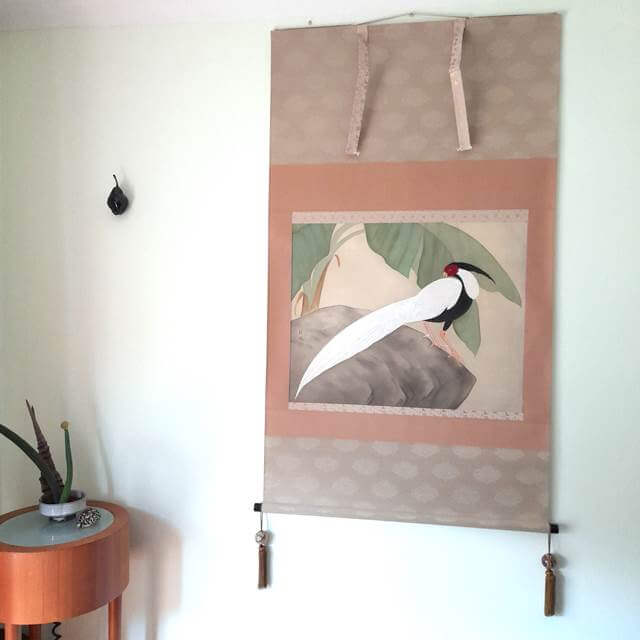
Like the previous occasion, it is displayed in such a chic style.
As in Japan, we get used to an image – a kakejiku in an alcove, we can’t wait to look at the display methods of kakejiku by our customers abroad. These are for us like a breath of fresh air.
We are thankful to him for placing another order with us.
We provide stain removal service for kakejiku internationally as you see in the episode this time. Please feel free to contact us if you have any concern over the issue.


